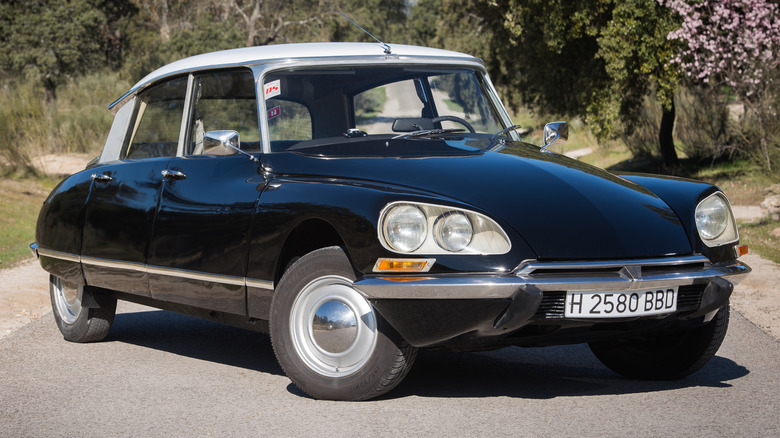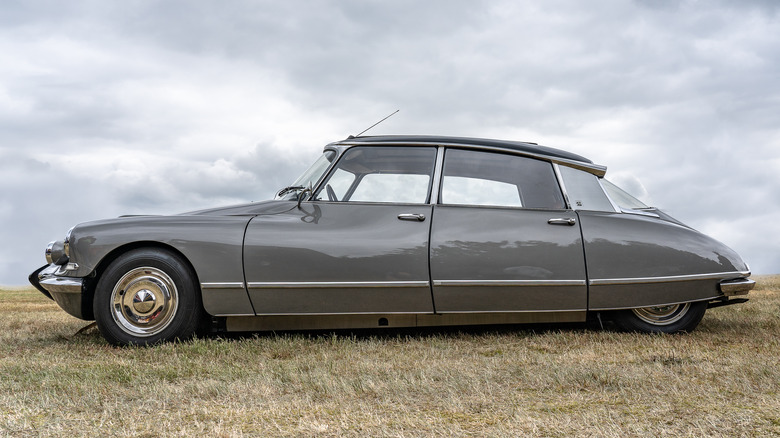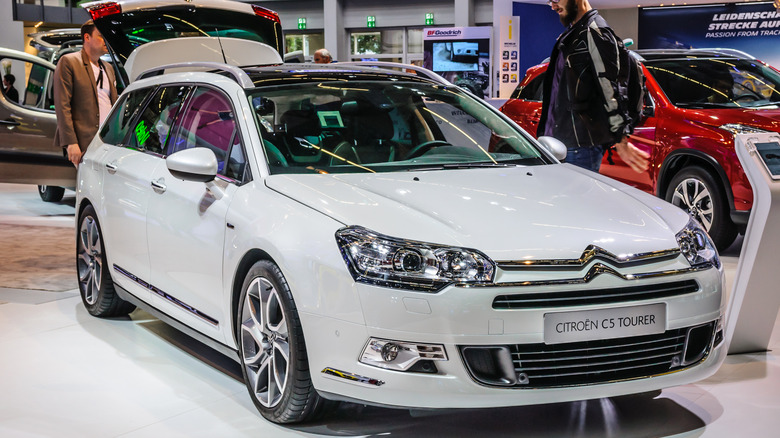This Innovative Citroën Technology Was Ahead Of Its Time
Open the hood of a 1965 Rolls-Royce Shadow and you'll find a plaque noting how the car's famously smooth suspension was in fact licensed from Citroën. This is because Citroën's suspension of the time was unlike any other, as the French carmaker set the benchmark for comfort and ride quality. If any more proof were needed, other manufacturers to license the technology included Bentley, BMW, Maserati, and Mercedes-Benz.
Called hydropneumatic suspension and invented by Paul Magès in 1944, the belt-driven technology was fitted to a prototype 2CV in 1946, then debuted on the futuristic-looking Citroën DS of 1955. Instead of using a coiled metal spring and conventional damper to soak up the bumps of the road, Citroën developed a system that replaced the spring with a sphere containing liquid and gas stored under massive pressure.
The technology was later expanded to integrate the braking and steering systems of Citroëns and remained in production until the final C5 rolled off the company's Rennes, France, production line in 2017. Although revolutionary when new, the technology had been usurped by active air suspension systems that matched its comfort while being simpler to service.
What is hydropneumatic suspension?
As explained by an employee training video produced by Citroën (below), hydropneumatic suspension is best explained as a system that replaces the four coiled springs of a traditional setup with four spheres filled with liquid and gas. These four spheres contain nitrogen gas in their top half and LHN (liquide hydraulique minérale) fluid in the lower half. These are separated by a synthetic rubber diaphragm, and a sphere is attached to each wheel with a cylinder and piston. The spheres absorb upwards forces created by the wheels hitting bumps in the road in the same way a spring would, with the gas compressing, then expanding when the wheel returns to its normal position.
Under force, the compressible gas acts as a spring and the fluid is pushed through a valve and into a reservoir, from which it returns when the sphere is no longer being compressed. A height corrector fitted to each axle is used to regulate the flow of fluid between the spheres and reservoir, ensuring the car returns to the correct ride height after every bump. The fluid is stored under very high pressure. The aforementioned Citroën training video says the optimum system pressure is between 140 and 170 bar, the latter being just under 2,500 psi. That's about 70 times greater than the pressure of a regular car tire. Later systems introduced more spheres, with the Citroën Xanta having four for the wheels and one on each axle.
The benefits of hydropneumatic
As well as overall smoothness, a key benefit of hydropneumatic suspension is how the car self-levels at its front and rear. This is handy while driving over uneven surfaces but also means each axle will adjust its height depending on what load the car is transporting. Put a large weight in the trunk and the rear suspension will rise to the vehicle's original ride height, as demonstrated by a video published on Citroën's Facebook page when the C5, pictured above, was still in production.
Another benefit is how Citroën incorporated the braking system. This works from the same hydraulic circuit, with the brake pedal acting as a value; when the driver brakes, the rear suspension drops slightly to help reduce nose-diving and maintain balance. Lastly, Citroën cars with hydropneumatic suspension have a lever in the cabin for manually raising or lowering the ride height. This is useful for navigating tricky terrain, and can even be used when changing a flat tire. As demonstrated in a YouTube video by HubNut, a DS can be driven on three wheels while remaining perfectly level.


